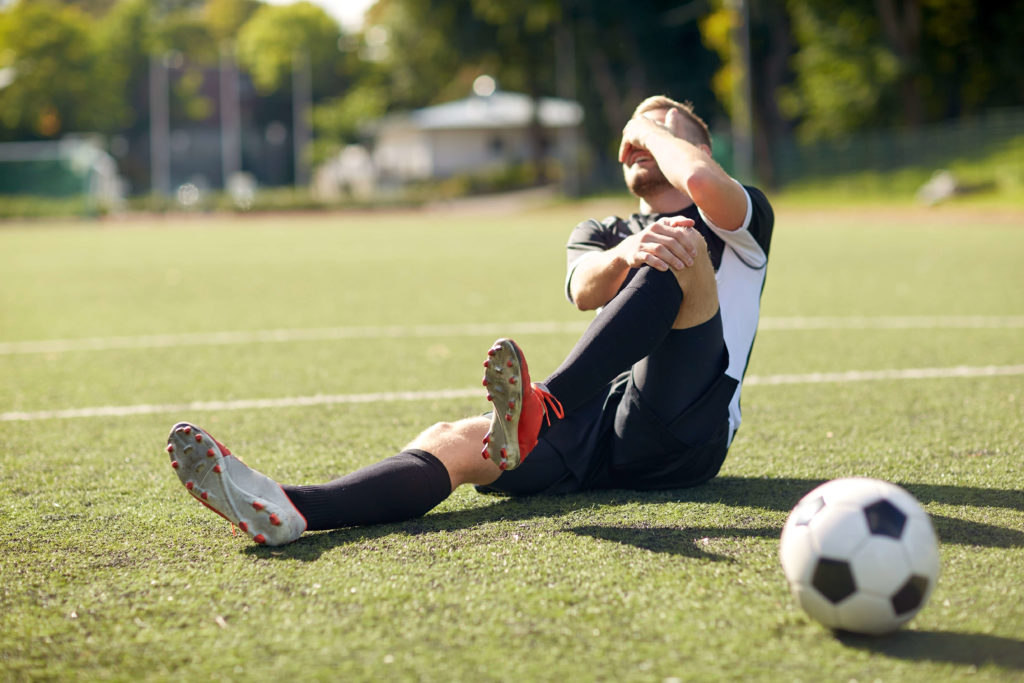In the realm of athletics, injuries are an undesirable yet prevalent aspect of an athlete’s trajectory. From modest ligament strains to extensive surgical procedures, the process of recuperation can be protracted and arduous. Nevertheless, a significant concern among athletes is the apprehension of experiencing a recurrence of injury upon resuming their participation in the sport. The experience of terror can have a debilitating impact, not only on an athlete’s physical capabilities but also on their psychological state of being. This article delves into the phenomenon of dread of re-injury, examining its consequences and presenting coping mechanisms for athletes to effectively manage and surmount this worry.
Exploring the Phenomenon of Fear of Re-injury:
The psychological phenomenon of fearing re-injury is commonly observed among athletes who have previously sustained injuries. The phenomenon is frequently marked by feelings of fear and apprehension towards the resumption of full activity, stemming from concerns about exacerbating the existing injury or incurring a new one. The aforementioned apprehension has the potential to materialize in both physiological and psychological ways, exerting an influence on an athlete’s self-assurance and overall athletic prowess.
The Influence of the Apprehension of Re-Injury:
Physical Limitations: Athletes who have apprehension regarding the possibility of re-injury may exhibit a tendency to restrain themselves during both training sessions and competitive events, leading to a decline in performance levels and a decrease in overall athletic capabilities.
Mental Distress: The persistent apprehension regarding the possibility of experiencing further harm can give rise to anxiety and stress, impacting the psychological welfare of athletes.
Diminished Pleasure: The apprehension of experiencing another injury can erode the enthusiasm and fervor that athletes often have for their chosen athletic discipline, transforming a previously gratifying pursuit into a source of apprehension.
Coping Mechanisms for Athletes:
The proposed approach involves close collaboration with physical therapists and trainers to facilitate a comprehensive and effective recovery process while also fostering the development of confidence. The progressive augmentation of training intensity can contribute to the restoration of self-assurance in the physical capacities of an individual’s body.
Positive self-talk involves the substitution of negative thoughts with positive affirmations. It is advisable to maintain a focus on one’s accomplishments and advancements rather than fixating on previous instances of physical harm.
The utilization of visualization techniques involves the mental creation of successful performances, which has been shown to have a positive impact on an individual’s confidence levels and a reduction in feelings of worry. Imagine yourself executing tasks with proficiency and without sustaining any physical harm.
Establishing realistic goals is crucial for success, as it allows individuals to set feasible objectives in both the short-term and long-term. Engaging in this activity fosters a perception of meaning and fulfillment, enhancing self-assurance.
Place Your Trust in Your Support System: Depend upon the knowledge and assistance provided by your coaches, trainers, and medical specialists. Having a team of knowledgeable individuals support you might help ease feelings of anxiety.
The integration of mindfulness practices and relaxation techniques into one’s daily routine is recommended as a means of effectively managing stress and maintaining a heightened state of attentiveness to the present moment.
Gradual Reintegration: It is advisable to avoid hastening the process of returning to full activity. The process of gradual progression facilitates the physiological and psychological adaptation of both the body and mind to the specific demands imposed by one’s chosen sport.
It is advisable to consider seeking assistance from a sports psychologist or mental health professional with expertise in sports-related anxiety if the apprehension of re-injury becomes excessively burdensome and significantly impacts one’s everyday functioning.
It is essential to be well-informed by acquiring knowledge on injury prevention, implementing appropriate warm-up and cool-down procedures, and employing measures to safeguard oneself throughout training and competitive activities.
Maintain an optimistic perspective throughout your athletic adventure in order to cultivate a good mindset. It is important to keep in mind that setbacks and injuries are inherent components of the developmental journey and have the potential to foster individual maturation and fortitude.
In conclusion,
Apprehension regarding the possibility of re-injury is an inherent and understandable concern among athletes; nonetheless, it should not necessarily dictate the entirety of one’s athletic journey. Athletes can effectively manage and conquer fear by prioritizing physical rehabilitation, engaging in mental training, and embracing positive coping mechanisms. In essence, the crux of the matter is the rekindling of the delight derived from engaging in competitive endeavors, along with the unwavering will and fortitude to strive toward one’s athletic aspirations. The potential for re-injury exists; nevertheless, by adopting a suitable mindset and engaging in adequate preparation, it is possible to overcome this obstacle and continue on the trajectory toward achieving success.


